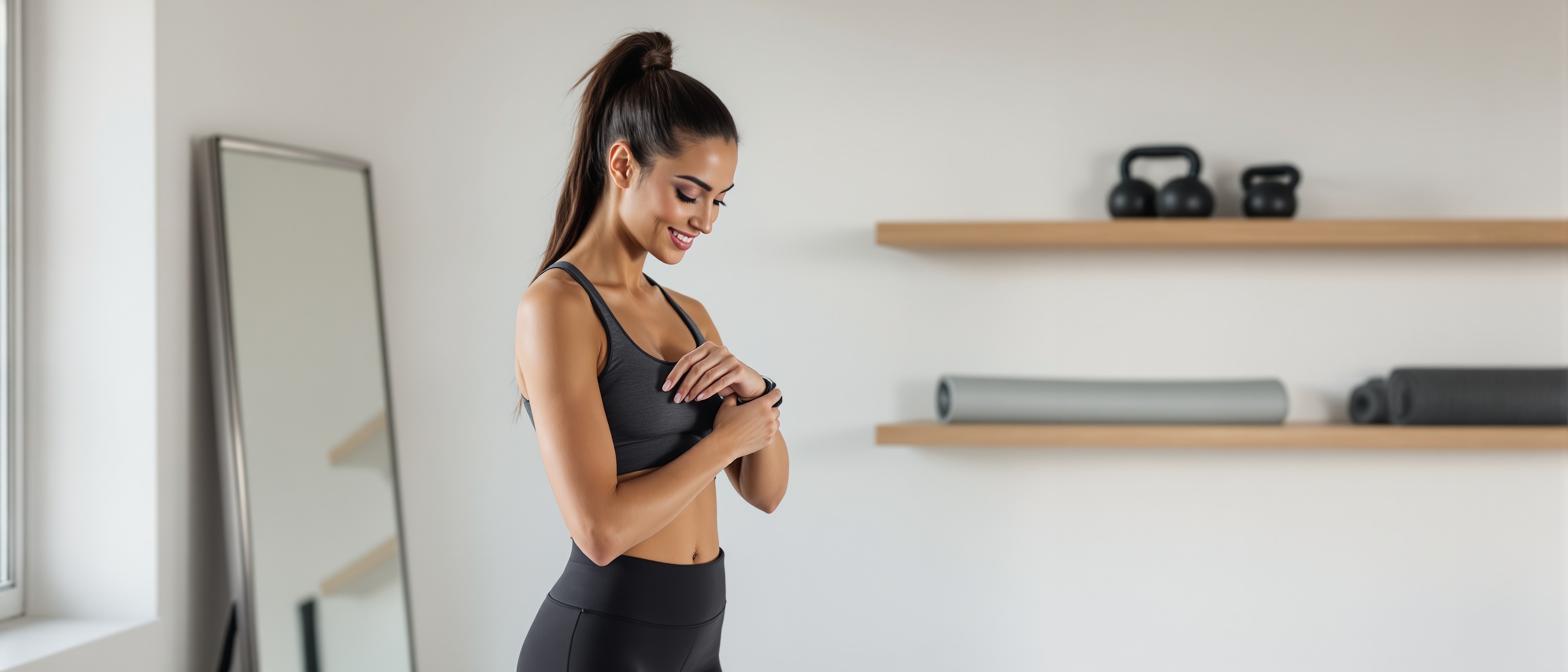The Calisthenics Secret That Breaks Every Plateau
You see them at the gym—people strapping weight plates to their waist, doing pull-ups that look absolutely brutal. Maybe you've wondered: Is this just showing off, or is there something to weighted calisthenics?
Here's the thing that might surprise you: searches for weighted calisthenics have exploded 104% over the past five years. And it's not just gym bros trying to look hardcore—there's actual science behind why adding weight to your bodyweight movements might be the missing piece in your training puzzle.
But here's what most people get wrong about it.
What Is Weighted Calisthenics?
Weighted calisthenics takes your classic bodyweight movements—pull-ups, dips, push-ups, squats—and adds external resistance. Think weighted vest push-ups or belt-loaded dips.
Sounds simple, right? Not exactly.
See, when you add weight to calisthenics, you're not just making the exercise "harder." You're fundamentally changing the training stimulus. Your muscles now have to overcome a greater load, which triggers different adaptations than endless reps of bodyweight movements.
Imagine you can bang out 20 perfect push-ups. Great. But your muscle-building potential from that 21st push-up? Pretty minimal. Add a 45-pound plate to your back, and suddenly 8 push-ups become a completely different beast. Your muscles are working in a new strength range, your nervous system is adapting to heavier loads, and you're building the kind of raw power that bodyweight-only training often can't touch.
But here's where most people mess this up…
Benefits vs. Traditional Bodyweight Training
Let's be brutally honest about something: traditional bodyweight training has limits. And if you've been stuck at the same number of pull-ups for months, you know exactly what I'm talking about.
Here's what weighted calisthenics brings to the table that regular bodyweight work often can't:
Progressive Overload That Actually Progresses With bodyweight movements, progression often means grinding out more reps or attempting circus-level variations. But research shows that for strength and muscle gains, working in lower rep ranges with higher loads is often more effective. Weighted calisthenics lets you stay in that sweet spot of 6-10 reps while continuously adding load.
Strength That Transfers Ever notice how someone who can do a weighted pull-up with 50 extra pounds can suddenly bang out way more bodyweight pull-ups? That's because weighted training builds genuine strength reserves. When you remove the weight, your bodyweight feels light.
Time Efficiency Here's something nobody talks about: weighted calisthenics can be more time-efficient. Instead of doing 3 sets of 25 push-ups, you might do 3 sets of 8 weighted push-ups and get better strength gains in less time.
But—and this is crucial—weighted calisthenics isn't automatically better than bodyweight training. It's different. Bodyweight movements excel at teaching movement quality, building muscular endurance, and developing relative strength. Weighted versions build absolute strength and muscle mass more effectively.
The real magic? Combining both in a periodized approach.
Sounds perfect, right? Here's the catch that most people don't see coming…
Safe Progressions and Common Mistakes
I've seen people go from struggling with 5 bodyweight pull-ups to immediately strapping on a 25-pound weight. Three weeks later, they're nursing a shoulder injury and wondering what went wrong.
Here's the mistake almost everyone makes: they treat weighted calisthenics like a video game where you just keep adding more weight. But your tendons, ligaments, and joint structures adapt much slower than your muscles.
The 10% Rule That Actually Works Start with just 10% of your bodyweight as added resistance. Can you bench press your bodyweight? Great. Can you do a weighted push-up with 10% of your bodyweight for multiple sets? That's your starting point.
Master the Movement First If you can't do at least 8-10 perfect reps of the bodyweight version, you're not ready for weight. Quality trumps ego every single time.
The Deload Weeks Nobody Talks About Every 4-6 weeks, drop the weight by 20-30% for a week. Your joints will thank you, and you'll often come back stronger. Most people skip this and wonder why they plateau or get injured.
Common Red Flags:
- Adding weight before mastering bodyweight form
- Increasing load too quickly (more than 5-10% weekly)
- Ignoring pain or joint discomfort
- Skipping warm-ups (weighted movements demand more preparation)
- Using poor-quality weight belts or equipment
But here's what the research actually shows about how to program this stuff effectively…
Sample Programs and Research Backing
A 2019 study in the Journal of Strength and Conditioning Research found that participants who followed a periodized weighted calisthenics program gained more upper body strength in 12 weeks than those doing traditional bodyweight progressions alone.
Here's a beginner-friendly approach that mirrors successful research protocols:
Weeks 1-4: Foundation Phase
- Weighted push-ups: 3 sets of 8-10 reps (5-10% bodyweight)
- Weighted squats: 3 sets of 12-15 reps (10-15% bodyweight)
- Assisted weighted pull-ups: 3 sets of 5-8 reps (start light)
- 2-3 sessions per week
Weeks 5-8: Strength Phase
- Increase weight by 5-10% when you can complete all sets at the upper rep range
- Drop to 6-8 reps for upper body, 10-12 for lower body
- Add weighted dips if shoulder mobility allows
Weeks 9-12: Power Phase
- Focus on explosive concentric movements
- Slightly reduce weight, emphasize speed
- Mix in bodyweight sessions for deload
The key insight from recent research? Alternating between weighted and bodyweight phases prevents adaptation plateaus better than sticking to one approach.
TL;DR:
- Weighted calisthenics = bodyweight movements + external load for different training stimulus
- Better for building absolute strength and muscle mass than endless bodyweight reps
- Start with 10% bodyweight added, progress slowly, prioritize form over ego
- Periodize between weighted and bodyweight phases for best results
- Your tendons adapt slower than muscles—respect the process
Look, here's the bottom line: weighted calisthenics isn't about showing off or making simple exercises unnecessarily complicated. It's about breaking through plateaus that pure bodyweight training can't touch.
If you've been stuck doing the same number of pull-ups for months, if your push-up progress has flatlined, or if you want to build serious functional strength—this might be exactly what your training has been missing.
Just remember: the weight is a tool, not a trophy. Use it wisely, progress intelligently, and your bodyweight movements will never feel the same again.





